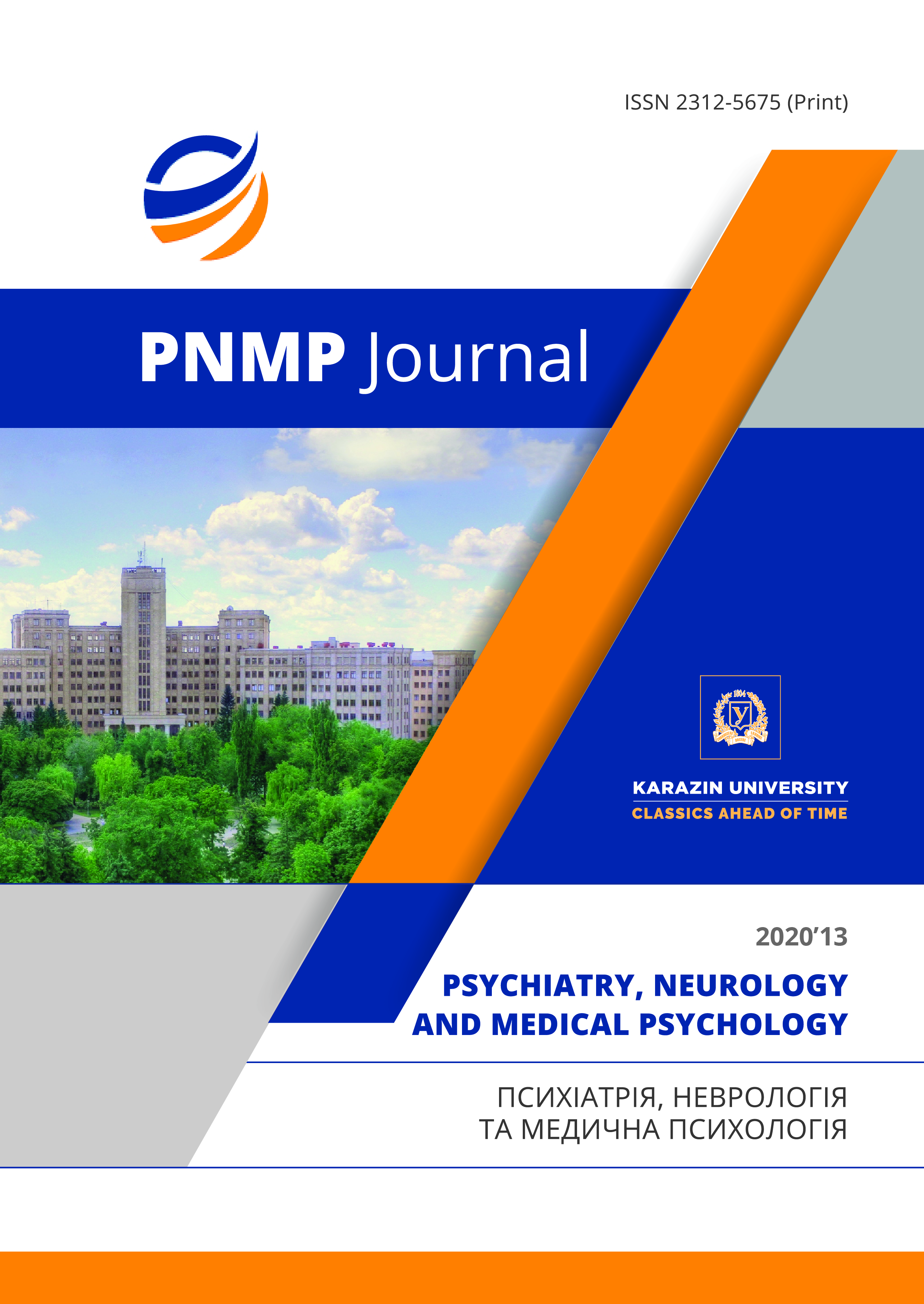Neuroplasticity in a range of induced effects of transcranial electrical stimulation
Abstract
This article presents the results of an analysis of modern scientific data on the induction of neuroplasticity using transcranial electrical stimulation. Three types of effects arising from the use of transcranial electrical stimulation are considered: central, peripheral and mixed. The central effects are analgesia, stabilization of hemodynamics, relief of pain. Peripheral effects include slowing the growth of tumors, modulating the dynamics of the acute phase response during inflammation, accelerating the healing of skin wounds, ulcerative defects of the gastric mucosa, and the focus of necrosis in myocardial infarction. Of the mixed effects are antistress, antipruritic, antitoxic effects. All of the above effects are based on the release of beta-endorphins. Potentiation of the effects of transcranial electrical stimulation is caused by enkephalinase inhibitors, 5-HT precursors, monoamine oxidase and tryptophanpyrrolase inhibitors. The features of the therapeutic effects of transcranial electrical stimulation are highlighted: they have a homeostatic character and are manifested both comprehensively and systemically. The effect on neuroplasticity by transcranial direct current stimulation (tDCS) was examined. tDCS is presented as a modulator of global neural activity. It was shown that tDCS leads to the activation of neurons and astrocytes through neurovascular conjugation, directly affects the cells of the vascular endothelium, and helps increase the speed of blood flow in the capillaries. It was shown that transcranial electrical stimulation has a corrective effect on clinical electrophysiological parameters in patients with neurogenic bladder dysfunction and nocturnal enuresis, has a stimulating effect on glial cells, diversifies the brain neurochemical status, modifies the synaptic microenvironment, regulates various neurotransmitters, and increases BDNF secretion. Studies show that tDCS led to a significant decrease in glutamate and glutamine in the anterior cingulate gyrus, a tendency to decrease glutamate and glutamine in the thalamus, and a tendency to increase GABA in the anterior part of the islet. Thus, transcranial electrical stimulation is a method capable of providing long-term therapeutic effects of stimulation and affect the processes of neuroplasticity.
Downloads
References
Vöröslakos M., Takeuchi Y., Brinyiczki K. [et al.]. Direct effects of transcranial electric stimulation on brain circuitsinrats and humans. Nature Communications. 2018, no. 9(1), p.483. DOI: 10.1038/s41467-018-02928-3
Bakulin I.S., Pojdasheva A.G., Pavlov N.A. [et al.]. Transcranial electrical stimulation to improve hand function in stroke. Advances in physiological sciences. 2019, np. 50(1), pp.90-104. [in Russ.] DOI: 10.1134/S030117981901003X
Rajgorodskij Yu.M., Sharkov S.M., Urnyaeva S.I. [et al.]. Transcranial electrical stimulation in the treatment of children with enuresis. Physiotherapy, valeneology and rehabilitation. 2014, no.4, pp.32-36. [in Russ.]
Mohammadi A. Induction of Neuroplasticity by Transcranial Direct Current Stimulation. Journal of Biomedical Physics and Engineering. 2016, no. 6(4), pp. 205–208.
Edwards D., Cortes M., Datta A. [et al.] Physiological and modeling evidence for focal transcranial electrical brain stimulation in humans: a basis for high-definition tDCS. NeuroImage. 2013, no. 74, pp. 266-275. DOI: 10.1016/j.neuroimage.2013.01.042
Savchenko A.B. Central analgesic and peripheral effects of transcranial electrical stimulation. Doct. Diss. Saint-Petersburg. 1994, 22 p. [in Russ.]
Andreeva I.N., Akishina I.V. Transcranial electrical stimulation. Astrakhan medical journal. 2012, no. 1, pp .22-27. [in Russ.]
Kolosova L.I., Lebedev V.P., Akoev G.N. [et al.]. Electrophysiological study of the effect of transcranial electrical stimulation on the effect of transcranial electrical stimulation on the functional recovery of the damaged sciatic nerve in the rat. Primary Sensory Neurone. 1997, no. 2(3), pp.177–183.
Rogova N.V., Petrov V.I. The effectiveness of transcranial electrical stimulation of endorphinergic brain structures in the correction of carbohydrate metabolism disorders in patients with type 2 diabetes. Non-drug medicine. 2009, no. 1, pp.54–59. [in Russ.]
Zyuzina N.A., Eliseeva L.N., Kade A.H. Improving the effectiveness of antihypertensive therapy using transcranial electrotherapy. Transcranial electrical stimulation: experimental clinical studies. SPb., Tsentr TES. 2009, pp. 237–243. [in Russ.]
Levtov V.A., Shuvaeva V.N. The effect of transcranial electroanalgesia on the rheological properties of blood. Transcranial electrical stimulation: experimental clinical studies. SPb., 2005, vol.2, pp.196–197. [in Russ.]
Kustarov V.N., Lebedev V.P., Sedneva S.A. The experience of using transcranial electrical stimulation in the treatment of premenstrual syndrome. Journal of Obstetrics and Women's Diseases. 2002, vol. LI(1), pp.61-63. [in Russ.]
Popova S.S., Gogua M.S., Alieva N.V. Comparative analysis of the possibilities of transcranial electrical stimulation and drug therapy in the treatment of the threat of abortion. Bulletin of RUDN, series Medical. 2009, no. 6, pp.310–316. [in Russ.]
Kade A.H., Lebedev V.P., Parahonskij A.P., Rubcovenko A.V. Immunomodulating effects of the synthetic analogue of enkephalins and transcranial electrical stimulation of the release of endogenous opioid peptides. Advances in Physiological Sciences. 1994, vol.25, no. 3, p. 24. [in Russ.]
Myagkov I.N. Nonspecific resistance in transcranial electrical stimulation. Omsk Scientific Herald. 2006, no. 7(43), pp.169-170. [in Russ.]
Lebedev V.P., Sergienko V.I. Development and justification of the therapeutic use of transcranial electrical stimulation of the brain's defense mechanisms using the principles of evidence-based medicine (results of twenty years of research). Transcranial electrical stimulation: experimental clinical studies. SPb., 2005, vol.2, pp. 11–69. [in Russ.]
Reed Т., Kadosh Roi Cohen. Transcranial electrical stimulation (tES) mechanisms and its effects on cortical excitability and connectivity. Journal of Inherited Metabolic Disease. 2018, no. 41(6), pp. 1123–1130. DOI: 10.1007/s10545-018-0181-4
Nitsche M.A., Cohen L.G., Wassermann E.M. [et al.]. Transcranial direct current stimulation: State of the art 2008. Brain Stimulation. 2008, no. 1(3), pp. 206-223. DOI: 10.1016/j.brs.2008.06.004
Monai H., Ohkura M., Tanaka M. [et al.]. Calcium imaging reveals glial involvement in transcranial direct current stimulationinduced plasticity in mouse brain. Nature Communications. 2016, vol.7, pp. 1-10. DOI: 10.1016/j.brs.2008.06.004
Wachter D., Wrede A., Schulz-Schaeffer W. [et al.]. Transcranial direct current stimulation induces polarity-specifi c changes of cortical blood perfusion in the rat. Experimental Neurology. 2011, vol. 227(2), pp. 322-327. DOI: 10.1016/j.expneurol.2010.12.005
Bragina O.A., Semyachkina-Glushkovskaya O.B., Bragin D.E. Anodic transcranial stimulation with direct current increases cerebral blood flow, tissue oxygenation and reduces neurological disorders in mice in normal and late post-traumatic period of traumatic brain injury. News of the Saratov University. New episode. Series Chemistry. Biology. Ecology. 2018, vol. 18(3), pp. 354-360. [in Russ.] DOI: 10.18500/1816-9775-2018-18-3-354-360
Ruohonen J., Karhu J. tDCS possibly stimulates glial cells. Clinical Neurophysiology. 2012, no. 123(10), pp. 2006-2009. DOI: 10.1016/j.clinph.2012.02.082
Yavari F., Nitsche M.A., Ekhtiari H. Transcranial Electric Stimulation for Precision Medicine: A Spatiomechanistic Framework. Frontiers in Human Neuroscience. 2017, vol.11, p. 159. DOI: 10.3389/fnhum.2017.00159
Medeiros L.F., de Souza I.C., Vidor L.P. [et al.]. Neurobiological effects of transcranial direct current stimulation: a review. Frontiers of Psychiatry. 2012, no. 3, p. 110. DOI: 10.3389/fpsyt.2012.00110
Brunoni A.R., Nitsche M.A., Bolognini N. [et al.]. Clinical research with transcranial direct current stimulation (tDCS): challenges and future directions. Brain Stimulation. 2012, no. 5, pp. 175-195. DOI: 10.1016/j.brs.2011.03.002
Stagg C.J., Bachtiar V., Johansen-Berg H. The role of GABA in human motor learning. Current Biology. 2011, no. 21(6), pp. 480-484. DOI: 10.1016/j.cub.2011.01.069
Fritsch B., Reis J., Martinowich K. [et al.]. Direct current stimulation promotes BDNF-dependent synaptic plasticity: potential implications for motor learning. Neuron. 2010, no. 66(2), pp. 198-204. DOI: 10.1016/j.neuron.2010.03.035.
Hunter M.A., Coffman B.A., Gasparovic C. [et al.]. Baseline effects of transcranial direct current stimulation on glutamatergic neurotransmission and large-scale network connectivity. Brain Research. 2015, no. 1594, pp. 92-107. DOI: 10.1016/j.brainres.2014.09.066
Rango M., Cogiamanian F., Marceglia S. [et al.]. Myoinositol content in the human brain is modified by transcranial direct current stimulation in a matter of minutes: a 1H-MRS study. Magnetic Resonance in Medicine. 2008, no. 60, pp. 782-789. DOI: 10.1002/mrm.21709
Clark V. P., Coffman B. A., Trumbo M. C. [et al.]. Transcranial direct current stimulation (tDCS) produces localized and specific alterations in neurochemistry: a1H magnetic resonance spectroscopy study. Neuroscience Letters. 2011, no. 500(1), pp.67–71. DOI: 10.1016/j.neulet.2011.05.244
Kim S., Stephenson M.C., Morris P.G. tDCS-induced alterations in GABA concentration within primary motor cortex predict motor learning and motor memory: а7Т magnetic resonance spectroscopy study. Neuroimage. 2014, no. 99, pp. 237-243. DOI: 10.1016/j.neuroimage.2014.05.070
Fregni F., Orsati F., Pedrosa W. [et al.]. Transcranial direct current stimulation of the prefrontal cortex modulates the desire for specific foods. Appetite. 2008, no. 51(1), pp. 34-41. DOI: 10.1016/j.appet.2007.09.016
Foerster B.R., Nascimento T.D., DeBoer M. [et al.]. Excitatory and inhibitory brain metabolites as targets and predictors of effective motor cortex tDCS therapy in fibromyalgia. Arthritis & rheumatology.2015, no. 67(2), pp. 576-581. DOI: 10.1002/art.38945
DosSantos M.F., Martikainen I.K., Nascimento T.D. Building up analgesia in humans via the endogenous μ-opioid system by combining placebo and active tDCS: a preliminary report. PLOS ONE. 2014, no. 9(7). e102350. DOI: 10.1371/journal.pone.0102350
Yoon E.J., Kim Y.K., Kim H.-R. [et al.]. Transcranial direct current stimulation to lessen neuropathic pain after spinal cord injury: a mechanistic PET study. Neurorehabilitation and Neural Repair. 2014, no. 28(3), pp. 250-259. DOI: 10.1177/1545968313507632
Brietzke A.P., Rozisky J.R., Dussan-Sarria J.A. [et al.]. Neuroplastic effects of transcranial direct current stimulation on painful symptoms reduction in chronic Hepatitis C: a phase II randomized, double blind, sham controlled trial. Frontiers in Neuroscience. 2015, no. 9, pp. 498. DOI: 10.3389/fnins.2015.00498




